|
|
Juncos
Juncos is a town located in the central, eastern part of Puerto Rico in the Caguas Valley, between Sierra Luquillo (Luquillo Mountains) to the North and the Cordillera Central (Central Mountain Range) to the South. The name of the town comes from the abundance of Juncos plants (Reeds) growing around the Valenciano River, Gurabo River and other humid places throughout the local area.
In the early colonial period, the region was divided into a number of large areas for agricultural development. One of those was Hato Valenciano which was further subdivided into Hatillo Lirio and Hatillo Juncos. It was in this area of Los Juncos that the growing population organized themselves to push for greater recognition and authority by forming a municipality.
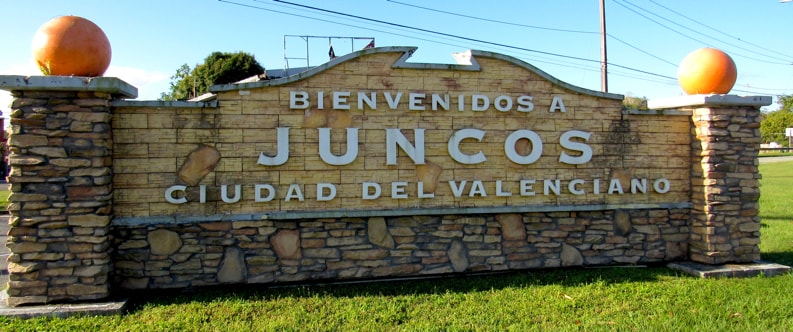
|
|
Welcome to Juncos.
|
A petition for the foundation of Juncos as a municipality, also known as the Ciudad de Valenciano (City of Valenciano), was made on May 2, 1782. At that time the residents of the area organized themselves and, represented by Antonio Matos, requested the Secular and Ecclesiastical Courts to move the parish church that was then in Las Piedras, to the place of Los Juncos. Within that petition they also requested the founding of a new town, separate from Humacao.
The petition for the foundation of the town was eventually accepted by the government and, on August 3, 1792, the interim governor, Francisco Torralbo y Robles, issued the order for the town to be founded. Tomás García Pagán, was appointed as the first alcalde (Mayor) of Juncos. There followed the building of a public square (plaza de recreo) and streets, then little by little schools, shops, etc. were built to develop the new town of Juncos. The first Mass in the newly built Parish Church of Inmaculada Concepción (Immaculate Conception) was celebrated on September 8, 1797, and thereafter population censuses mention Juncos as a separate town.
Over the years, the original extent of the municipality has shrunk slightly as parts around its borders were ceded to become part other municipalities when those were established. This happened in 1812 when Hato Grande (later named San Lorenzo) became a municipality and, a few year's later, with Gurabo when it was established.
As happened with a number of other municipalities in Puerto Rico, in 1902 Juncos was eliminated as a municipality by the Puerto Rico Legislature and was incorporated as part of San Lorenzo. This was reversed in 1905 and Juncos again became its own municipality.
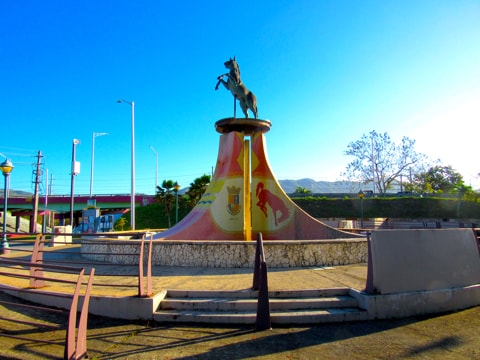
|
|
Monument to Valenciano's Mules
|
One of the nicknames for the town is "Cuidad del Valenciano" (City of Valenciano) which dates from its origins, and in conjunction with that, the people of Juncos are known as Los Mulos del Valenciano (Valenciano's Mules).
This is celebrated in the Monumento de los Mulos de Valenciano (Monument to Valenciano's Mules) at the corner of Road PR-189 as is zig-zags under PR Highway #30.
From before its founding, and into the 20th century the economy of Juncos was dominated by agriculture, with sugarcane and tobacco being its main products for much of that time. As these declined, Juncos has shifted to a more industrial based economy and, where sugarcane once dominated the landscape, there are now modern factories.
|
Parroquia Inmaculada Concepción
Located on the eastern side of Plaza de Recreo Antonio R Barceló is the parish church of Juncos, Parroquia Inmaculada Concepción (Parish Church of the Immaculate Conception).
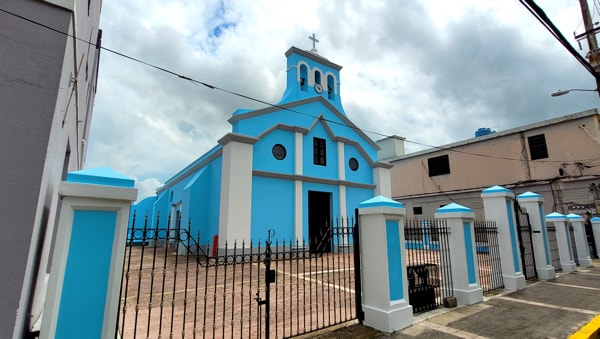
|
|
Parroquia Inmaculada Concepción
|
The creation of this church played an integral part in the founding of the municipality of Juncos, as the move of the parish from Las Piedras was the starting point in the petition to establish the town.
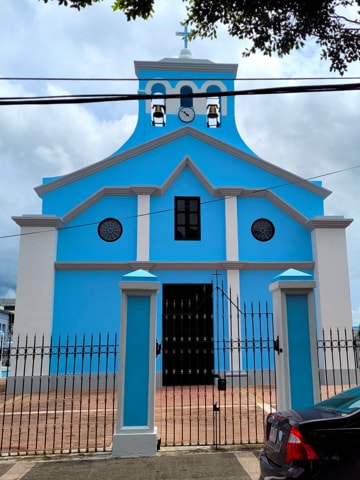
|
|
Church's façade and belfry
|
While a church was started once the municipality became official, and the first mass was held in 1797, it took some years to complete a permanent church building. The original was in wood and while constructing a building in masonry was started soon afterwards, it was not completed until 1827. That building has not survived through till today, however, as it was destroyed by an earthquake in 1867.

|
|
Inmaculada Concepción viewed from the plaza
|
The rebuilding following the earthquake was completed in 1869. There have been a number of additional refurbishments since then and the façade of the church appears to be the only part that has remained relatively intact through those processes. Even then, a clock was placed on the front of the belfry, and an atrium was added. During a refurbishment project in the mid-20th century, the windows which existed on either side of the front door were filled in, so the appearance has changed over more than 200 years.
|
La Placita de la Bandera
The Placita de la Bandera (Little Square of the Flag) is a small space squeezed into the side of Calle José J Acosta. The Puerto Rican flag on the open side of a building is one of the Banderas de Hector (Flags of Hector),
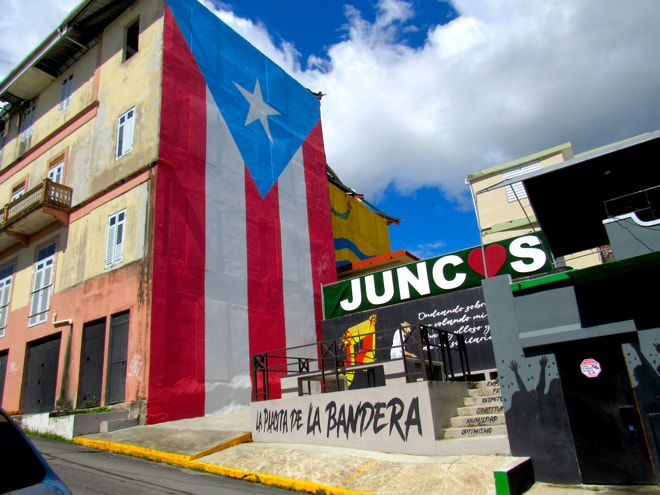
|
|
Placita de la Bandera
|
which have been painted in every town around the island by artist Hector Collazo. Beside it on the building to the right and slightly behind is also the flag of Juncos with its yellow background.

|
|
Mural on back wall
|
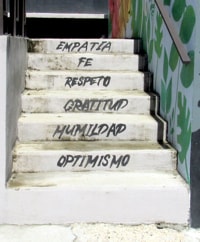
|
Empathy
Faith
Respect
Gratitude
Humility
Optimism
|
Together with a mural on the back wall and other imagery, this little square provides a glimpse of the culture of Juncos and the character of its people.
|
Other scenes from around Juncos
José M Gallardo Library
Located on Paseo Escuté, South of the Casa Alcaldía, is the municipal library - Bibleoteca José M Gallardo.
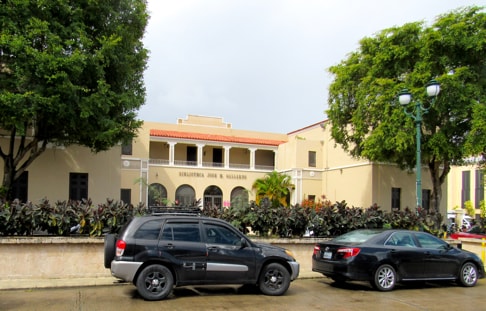
|
|
Bibleoteca José M Gallardo
|
|
|
Christ of the Brotherhood
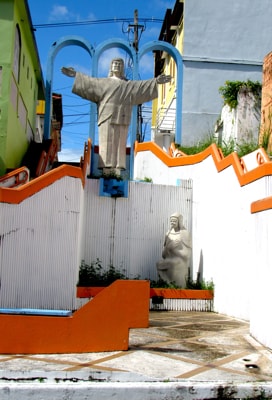
|
|
Cristo de la Fraternidad
|
Close to the Juncos Theatre and inserted as a connector between Calle Doctor Almodovar and Calle Muñoz Rivera is Paseo Fraternidad (Brotherhood Passageway). Between the stairs which make up the passageway is a monument with two statues, Christ of the Brotherhood - Cristo de la Fraternidad, and the Virgin Mary. The outstretched arms of the Christ represents an invitation to family unity.
|
Old Municipal Jail
Situated on Calle Agueybana is the Antigua Cárcel Municipal (Old Municipal Jail).
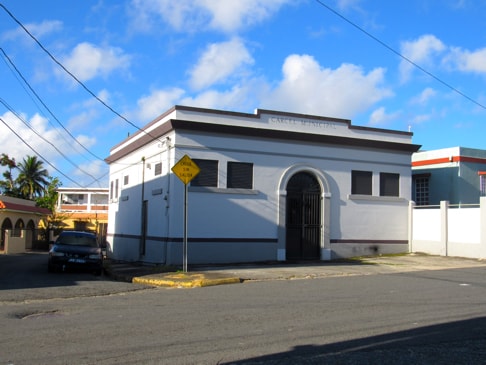
|
|
Antigua Cárcel Municipal
|
Now restored and used as the Office of Culture and Tourism by the Municipal government.
|
|
Old Tobacco Factory
The Antigua Tabacalera (Old Tobacco Factory) represents a part of Juncos history. This had been acquired by the municipal government to refurbish as a tobacco museum, but was unfortunately destroyed by a fire in 2021.
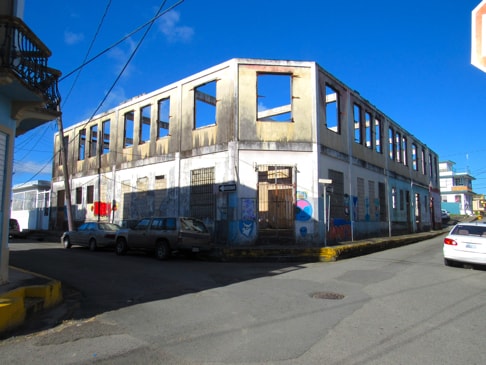
|
|
Antigua Tabacalera
|
|
Juncos Theatre
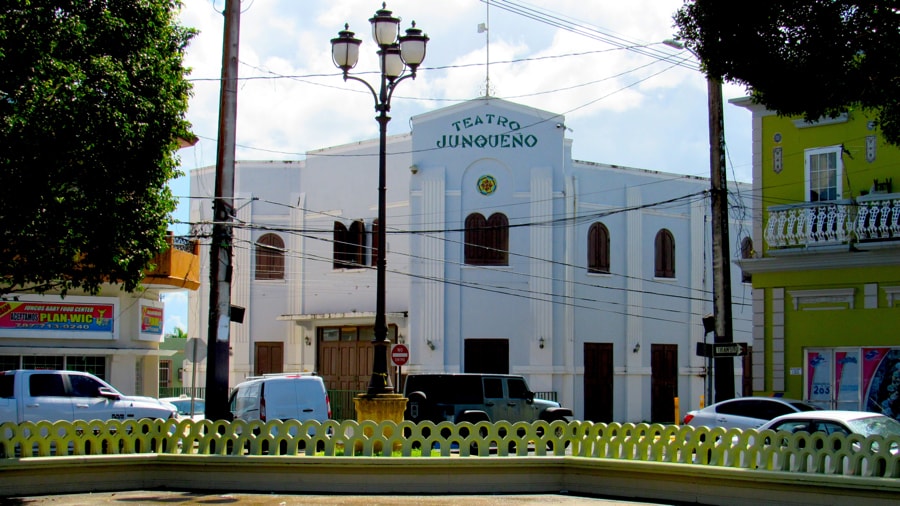
|
|
Teatro Junqueño
|
Standing at the southeast corner of the plaza de recreo is the Juncos Theatre - Teatro Junqueño. Originally built in 1912 as the Arcelay Cinema, it was restored and reinaugurated as the Teatro Junqueño in 1996.
|
View of Downtown Juncos
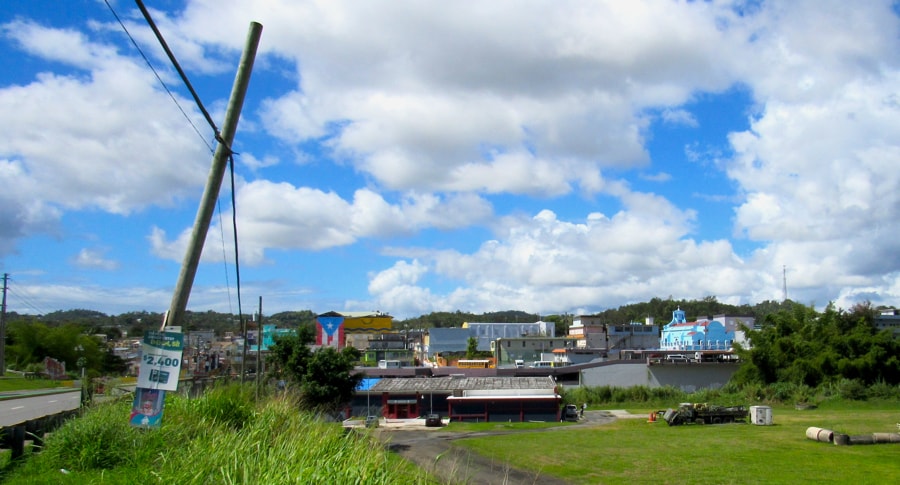
|
|
Looking across Río Valenciano
|
This view from the East looks across Río Valenciano (the Valenciano River) towards downtown Juncos. To the right of centre, the blue building is the parish church Inmaculada Concepción while the long gray building in the middle, below the tree tops, is Teatro Junqueño. The Placita de la Bandera can be located by looking to the left of centre for the Puerto Rican flag on the side of a building.
|
|
|
|



